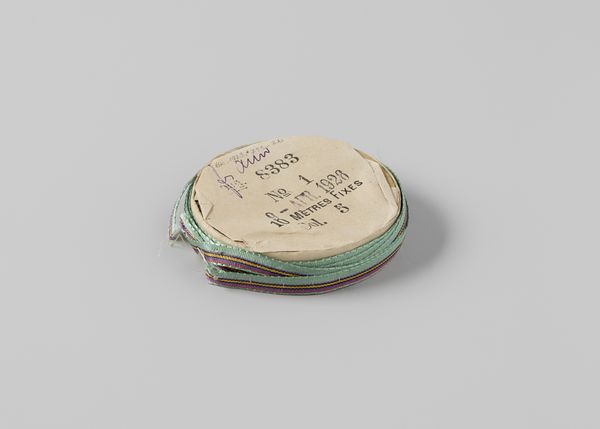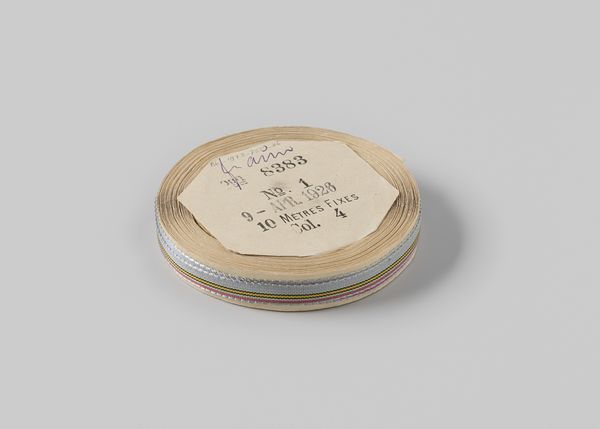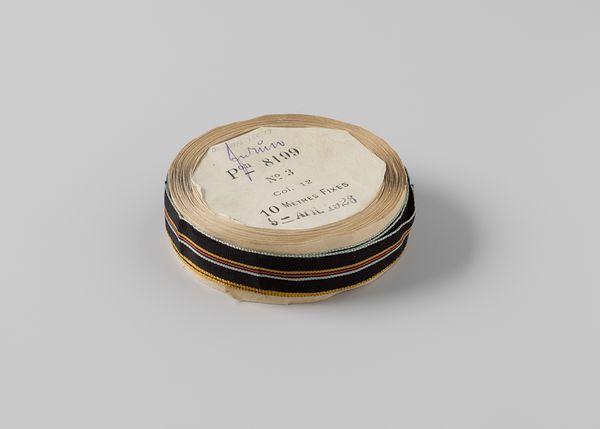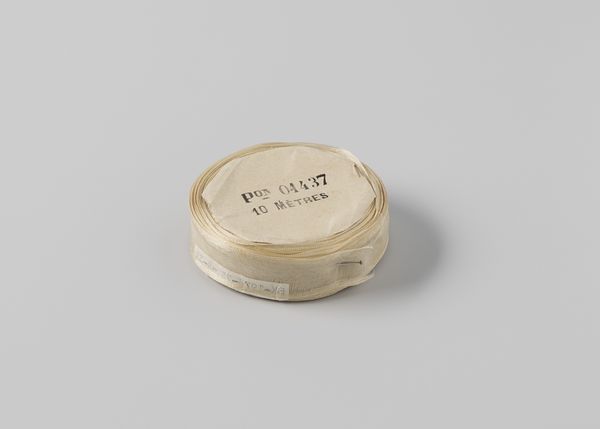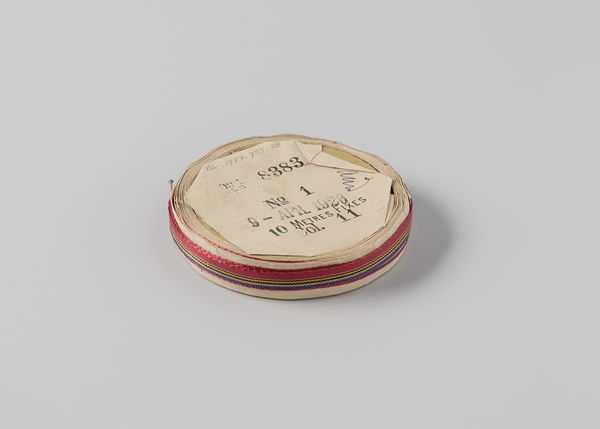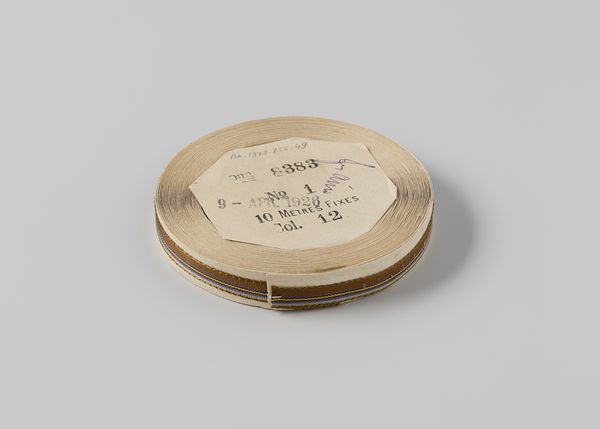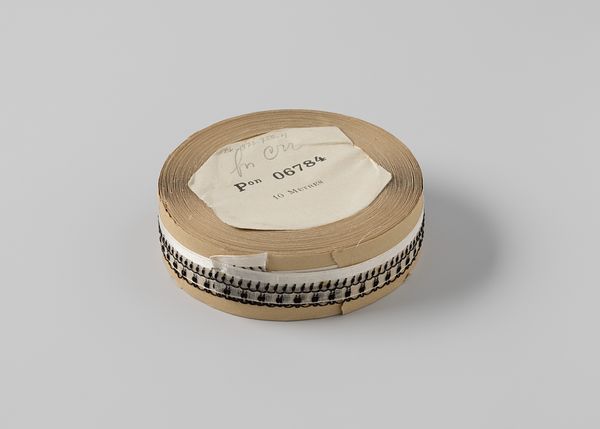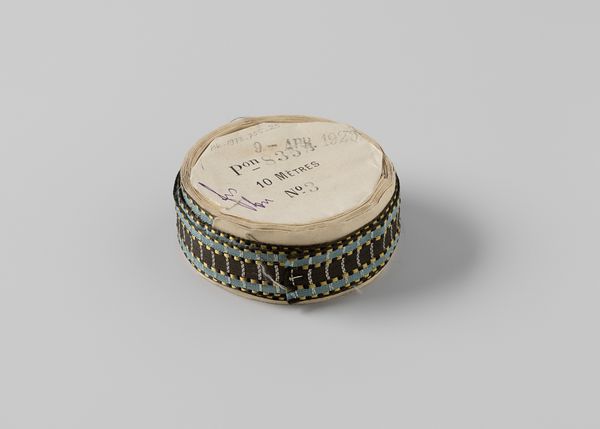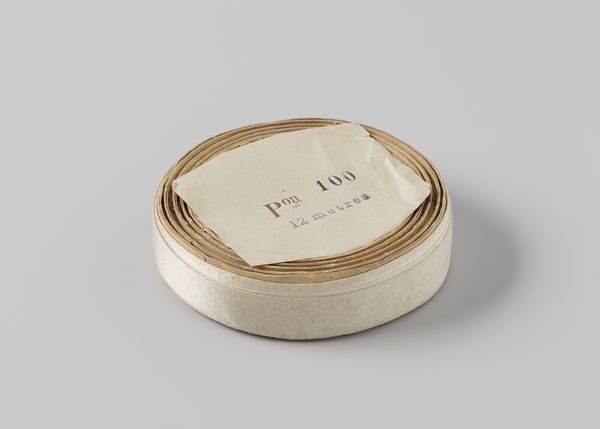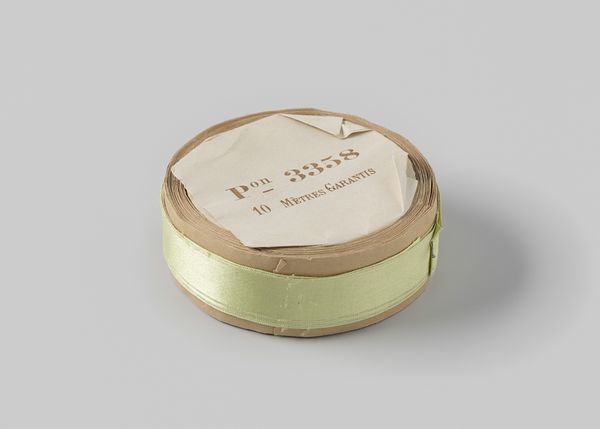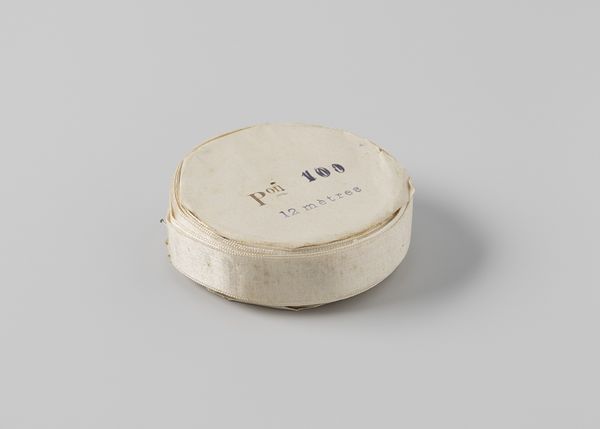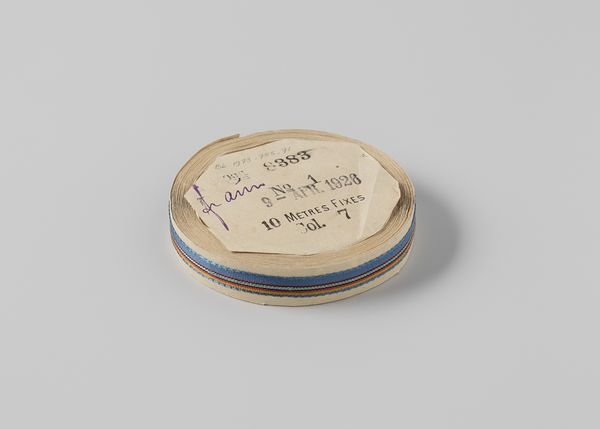
Lint op rol, gestreept, lichtblauw met lichtgroen, zwart, geel en rood before 1926
0:00
0:00
gustavschnitzler
Rijksmuseum
photography
#
studio photography
#
product studio photography
#
product shot
#
still-life-photography
#
flat design on paper
#
personal journal design
#
photography
#
product design photgrpaphy
#
metallic object render
#
product mock up
#
design mock up
#
product render
Dimensions: width 0.7 cm, diameter 8.5 cm
Copyright: Rijks Museum: Open Domain
Editor: This is "Lint op rol, gestreept, lichtblauw met lichtgroen, zwart, geel en rood," a photograph by Gustav Schnitzler taken before 1926. It shows a roll of ribbon, neatly arranged. What strikes me is its ordinariness. It's so everyday. How can something so functional be art? Curator: It’s that very ordinariness that provides the power, I think. Schnitzler elevates the mundane. Consider the historical context: photography was still developing as an artistic medium. Commercial photography, especially, was burgeoning, often tied to advertising and consumerism. Do you think Schnitzler is simply presenting a product, or might he be subtly commenting on the rise of consumer culture in the early 20th century? Editor: That’s interesting. So, you're suggesting that by focusing on something as simple as a ribbon, Schnitzler could be engaging with broader societal shifts. But isn't it just a picture of ribbon? Curator: Precisely, and isn't that telling? The details become paramount. What colours are prominent, and how are they arranged? Does it evoke a specific emotional response or remind you of particular design movements happening at the time? The Bauhaus, for example, heavily influenced design and art by merging craft with industrial production. Editor: I hadn’t thought of it like that. I guess the striped ribbon *does* have a clean, almost graphic quality, kind of Bauhaus-y. Curator: Exactly. Think of this photograph as an object and a historical artifact, it allows us to see a reflection of the period and societal forces. In essence, by examining the design aesthetics embedded within it, we gain insights into consumerism and its socio-political implications in our daily existence. Editor: I get it. By looking closely, it isn't *just* a ribbon. It speaks to history, culture, and even politics! Curator: Precisely! And hopefully, inspires action and a consciousness of the present and our influence within.
Comments
No comments
Be the first to comment and join the conversation on the ultimate creative platform.

